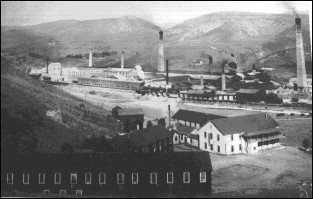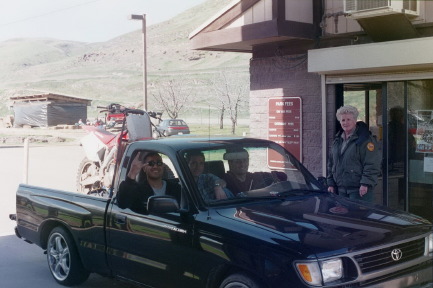CARNEGIE
Carnegie, named for Andrew Carnegie, was located in San Joaquin County,
four miles east of Tesla, California. It was subsidiary of the Tesla coal mining
operation where fire brick and architectural terra cotta were manufactured
from 1903 to 1911 by the Carnegie Brick and Pottery Company. The clay was
shipped by rail from Tesla, and the finished products were shipped by rail
to Stockton.
 The company town consisted of a hotel, school, bakery, saloon, bunkhouses,
and cabins. It had a population of 350 to 400 of mostly Italian immigrants.
The plant employed 200 workers during the busy season. There was also a
small Chinese section along the base of the hill west of the Graner Hotel.
The company town consisted of a hotel, school, bakery, saloon, bunkhouses,
and cabins. It had a population of 350 to 400 of mostly Italian immigrants.
The plant employed 200 workers during the busy season. There was also a
small Chinese section along the base of the hill west of the Graner Hotel.
Carnegie consisted of a brick plant, with machinery capable of making 20,000 brick
per day, and two long drying sheds and 26 kilns. A well-known landmark was a
317-foot high square brick chimney fed by six kilns.
In 1905, the terra cotta plant was added to produce the ornate terra cotta
trimmings found on many of the buildings still remaining today throughout the
state. Some of the finest examples include the Oakland Hotel, Los Angeles
County Natural History Museum, and the Palace Hotel, Monadnock Building, Bank
of Italy, and Methodist Book Concerns Building in San Francisco.
After Carnegie shut down in 1911, the plants and buildings were razed and
the property eventually became a motorcycle and off-road vehicle park. In 1979,
a part of Carnegie became the Carnegie State Vehicular Recreation Area.

Entrance to the Carnegie State Vehicular Recreation Area where the folks
are friendly.

Steep slopes at Carnegie attract dirt bike riders.

Contact Dan L. Mosier at danmosier@earthlink.net.
Copyright © 2003 Dan L. Mosier

 The company town consisted of a hotel, school, bakery, saloon, bunkhouses,
and cabins. It had a population of 350 to 400 of mostly Italian immigrants.
The plant employed 200 workers during the busy season. There was also a
small Chinese section along the base of the hill west of the Graner Hotel.
The company town consisted of a hotel, school, bakery, saloon, bunkhouses,
and cabins. It had a population of 350 to 400 of mostly Italian immigrants.
The plant employed 200 workers during the busy season. There was also a
small Chinese section along the base of the hill west of the Graner Hotel.


